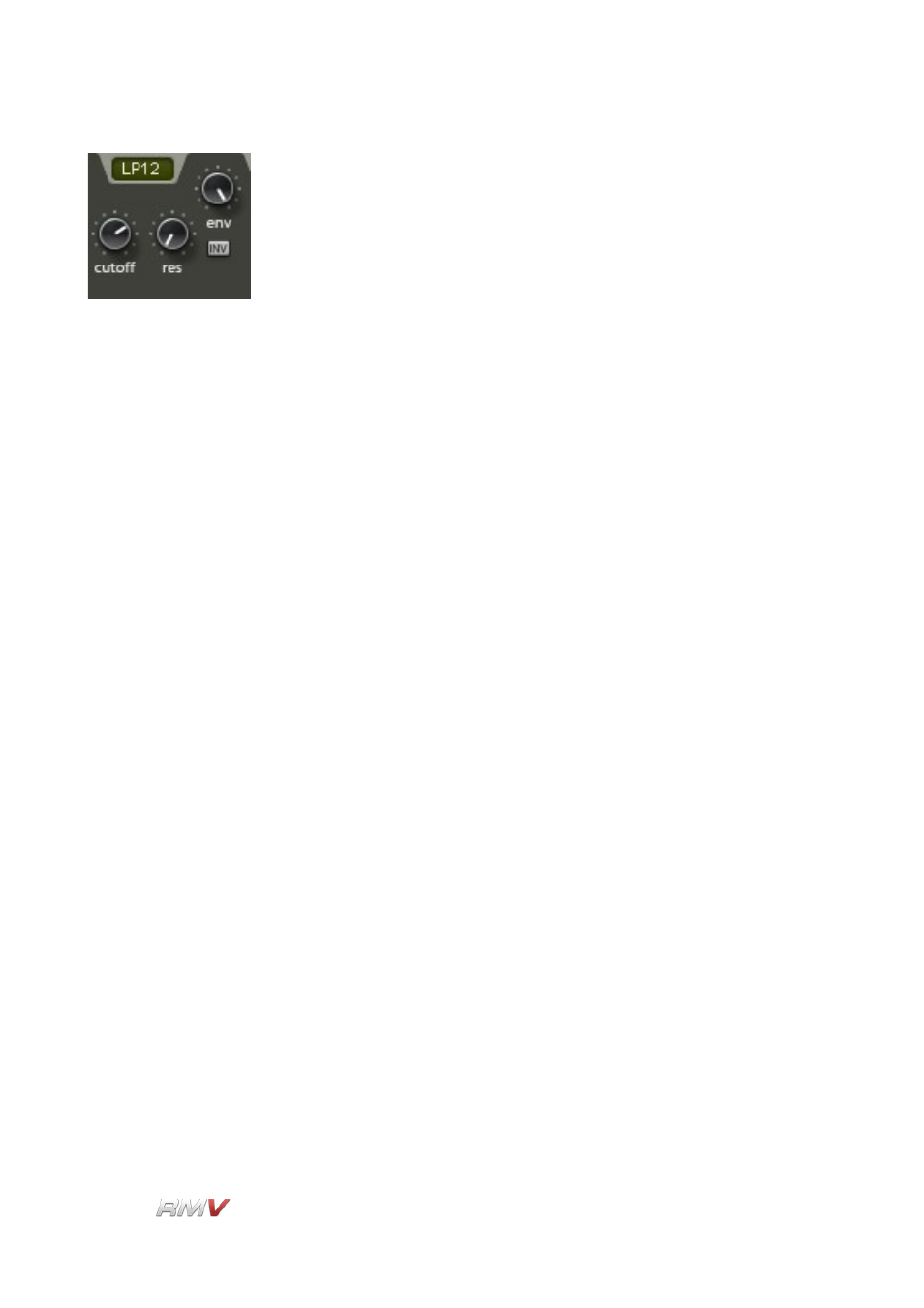LinPlug RMV User Manual
Page 86

Signal Path
Eight different types of filter are available:
•
LP12 ("Low Pass 12 dB/Octave")
•
LP24 ("Low Pass 24 dB/Octave")
•
HP12 ("High Pass 12 dB/Octave")
•
HP24 ("High Pass 24 dB/Octave")
•
BP12 ("Band Pass 12 dB/Octave")
•
BP24 ("Band Pass 24 dB/Octave")
•
BR12 ("Band Reject 12 dB/Octave")
•
BR24 ("Band Reject 24 dB/Octave")
To change the filter type, click on the Type control and select the desired filter type.
The RMV Filter subsection contains controls for three parameters: Cutoff, Res(onance)
and Env(elope Depth), as well as an AHDSTR envelope for controlling the filter cutoff
frequency. There is also a button for inverting the filter envelope. These controls are
described below:
Cutoff:
Cutoff is used to set the frequency (in Hz) of the filter cutoff point.
This has different effects depending on the type of filter being used.
For more information see the Glossary.
Res(onance):
Resonance is used to set the amount of emphasis around the cutoff
frequency. Higher settings create a more pronounced peak in the
signal while lower settings produce a flatter response.
Env(elope Depth): Envelope Depth is used to set the degree to which the filter's
envelope effects the signal. Setting Env.Dth to 0.00 means that the
envelope has no effect on the filter. Setting Envelope Depth to 1.00
means that the filter is modulated by the envelope's full range.
Inv(ert):
The Invert button is used to set either a positive or negative envelope
shape. This can be used for a range of effects including opening the
filter when a note is released (this is impossible with a non-inverted
envelope).
LinPlug
Reference Manual 5.0.1
86